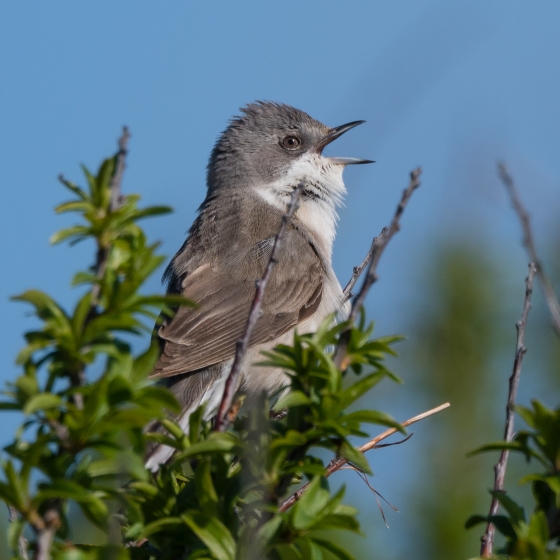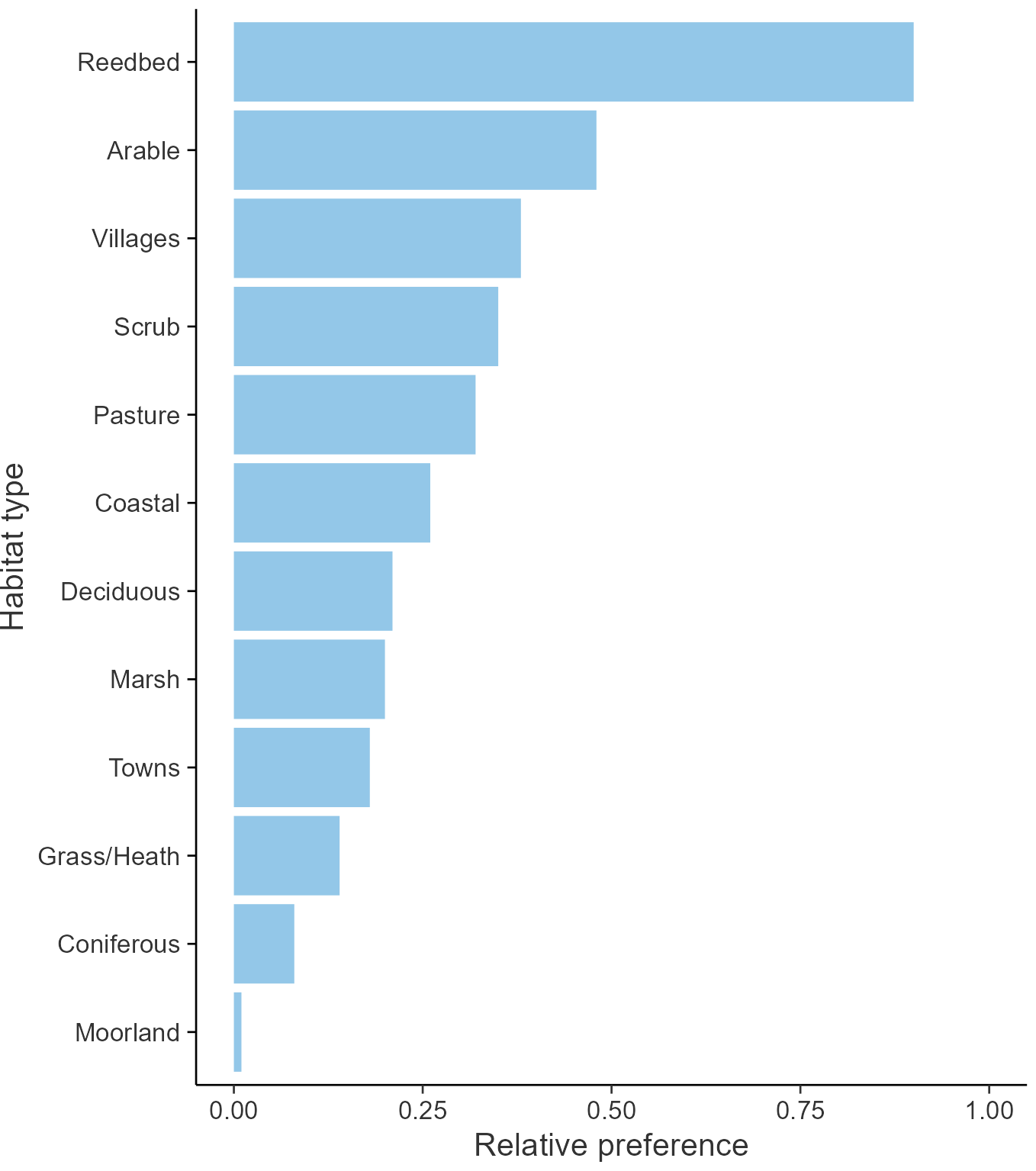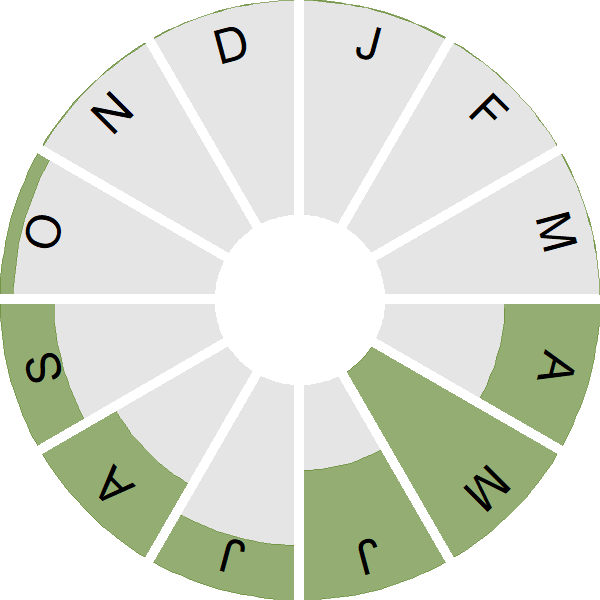Lesser Whitethroat

Introduction
The Lesser Whitethroat is secretive bird of farmland and reedbed habitats. The distinctive song is a helpful guide to its presence.
A warbler with greyish upperparts, white undersides and a large black eye stripe, Lesser Whitethroat numbers have fluctuated in the UK since the 1960s. They primarily breed in lowland England and Wales.
Lesser Whitethroats migrate to the UK in April and return to Africa in the autumn via the eastern Mediterranean. A small number may appear in the UK outside the breeding season, almost all of which will be representatives of the eastern subspecies, blythii, 'Siberian' Lesser Whitethroat.
- Our Trends Explorer gives you the latest insight into how this species' population is changing.

Key Stats
Identification
ID Videos
This section features BTO training videos headlining this species, or featuring it as a potential confusion species.
Warbler Identification Workshop Part 4: The Whitethroats
Songs and Calls
Song:
Call:
Status and Trends
Conservation Status
Population Change
Lesser Whitethroat abundance was roughly stable (albeit with short-term fluctuations) from the 1960s until the late 1980s, but the CBC/BBS and CES trends provide evidence for a subsequent moderate decline that lasted into the late 1990s. These changes were statistically significant, and large enough over the relevant periods to trigger alerts. BBS has subsequently shown a significant sharp upturn, but this contrasts strongly with the continued decrease recorded by CES ringers. A northward redistribution of the UK breeding population (Balmer et al. 2013) may go some way to explaining inconsistencies in the monitoring results. Wide fluctuations in survival and productivity have been recorded by CES ringers, and may be influencing population change, but pressures during migration and in winter are the most likely causes of any decline (Fuller et al. 2005). Numbers across Europe have been broadly stable since 1980 (PECBMS: PECBMS 2020a>).
Distribution
Breeding Lesser Whitethroats were historically restricted to England, but range expansion over the last 40 years has seen them spread into lowland areas of Wales, northern England, southern Scotland and southwest England.
Occupied 10-km squares in UK
2007/08–10/11
or view it on Bird Atlas Mapstore.
2008–11
or view it on Bird Atlas Mapstore.
European Distribution Map
Distribution Change
Lesser Whitethroat breeding range has expanded by 33% since the 1970s. Increases in the north and decreases in abundance in the south suggest a range shift may be underway.
Change in occupied 10-km squares in the UK
from 1981–84 to 2007–11
or view it on Bird Atlas Mapstore.
from 1968–72 to 2008–11
or view it on Bird Atlas Mapstore.
Seasonality
Lesser Whitethroat is a summer visitor, arriving in mid April; after singing it is generally harder to detect until autumn when a pulse of passage migrants can be encountered in August and September. Later migrants may be of eastern origin. A handful of birds winter.
Weekly pattern of occurrence
The graph shows when the species is present in the UK, with taller bars indicating a higher likelihood of encountering the species in appropriate regions and habitats.

Habitats
Breeding season habitats
Relative frequency by habitat
The graph shows the habitats occupied in the breeding season, with the most utilised habitats shown at the top. Bars of similar size indicate the species is equally likely to be recorded in those habitats.

Movement
Britain & Ireland movement
Foreign locations of birds ringed or recovered in Britain & Ireland
Dots show the foreign destinations of birds ringed in Britain & Ireland, and the origins of birds ringed overseas that were subsequently recaptured, resighted or found dead in Britain & Ireland. Dot colours indicate the time of year that the species was present at the location.
- Winter (Nov-Feb)
- Spring (Mar-Apr)
- Summer (May-Jul)
- Autumn (Aug-Oct)

European movements
EuroBirdPortal uses birdwatcher's records, such as those logged in BirdTrack to map the flows of birds as they arrive and depart Europe. See maps for this species here.
The Eurasian-African Migration Atlas shows movements of individual birds ringed or recovered in Europe. See maps for this species here.
Biology
Productivity and Nesting
Nesting timing
Egg measurements
Clutch Size
Incubation
Fledging
Survival and Longevity
Survival is shown as the proportion of birds surviving from one year to the next and is derived from bird ringing data. It can also be used to estimate how long birds typically live.
View number ringed each year in the Online Ringing Report.
Lifespan
Survival of adults
Survival of juveniles
Biometrics
Wing length and body weights are from live birds (source).
Wing length
Body weight
Ring Size
Classification, names and codes
Classification and Codes
- Order: Passeriformes
- Family: Sylviidae
- Scientific name: Curruca curruca
- Authority: Linnaeus, 1758
- BTO 2-letter code: LW
- BTO 5-letter code: LESWH
- Euring code number: 12740
Alternate species names
- Catalan: tallarol xerraire
- Czech: penice pokrovní
- Danish: Gærdesanger
- Dutch: Braamsluiper
- Estonian: väike-põõsalind
- Finnish: hernekerttu
- French: Fauvette babillarde
- Gaelic: Gealan-coille-beag
- German: Klappergrasmücke
- Hungarian: kis poszáta
- Icelandic: Netlusöngvari
- Irish: Gilphíb Bheag
- Italian: Bigiarella
- Latvian: gaišais kaukis
- Lithuanian: pilkoji devynbalse
- Norwegian: Møller
- Polish: piegza
- Portuguese: papa-amoras-cinzento
- Slovak: penica popolavá
- Slovenian: mlinarcek
- Spanish: Curruca zarcerilla
- Swedish: ärtsångare
- Welsh: Llwydfron Fach
Research
Causes of Change and Solutions
Causes of change
There is little good evidence available regarding the drivers of the breeding population change in this species in the UK.
Further information on causes of change
No further information is available.
Information about conservation actions
There is no good evidence to explain why the population of Lesser Whitethroat has fluctuated and therefore few specific conservation actions have been proposed to benefit this species.
A study in Strathclyde found that mixed scrubby areas (mature hawthorn interspersed with bramble, dog rose, gorse and willow) were important and that the birds preferred areas from which grazing animals were denied access by fencing (Byars et al. 1991). However, it should be noted that this was based on only seven occupied territories at the edge of the species range. A Polish study also found that Lesser Whitethroat preferred habitat with structural heterogeneity and that they favoured shrubs ( Szymanski & Antczak 2013).
More Evidence
More evidence from Conservation Evidence.com
Partners
Citing BirdFacts
If you wish to cite particular content in this page (e.g. a specific value) it is best to use the original sources as linked in the page. For a more general citation of the whole page please use: BTO (20XX) BirdFacts Species: profiles of birds occurring in the United Kingdom. BTO, Thetford (www.bto.org/birdfacts, accessed on xx/xx/xxxx).

